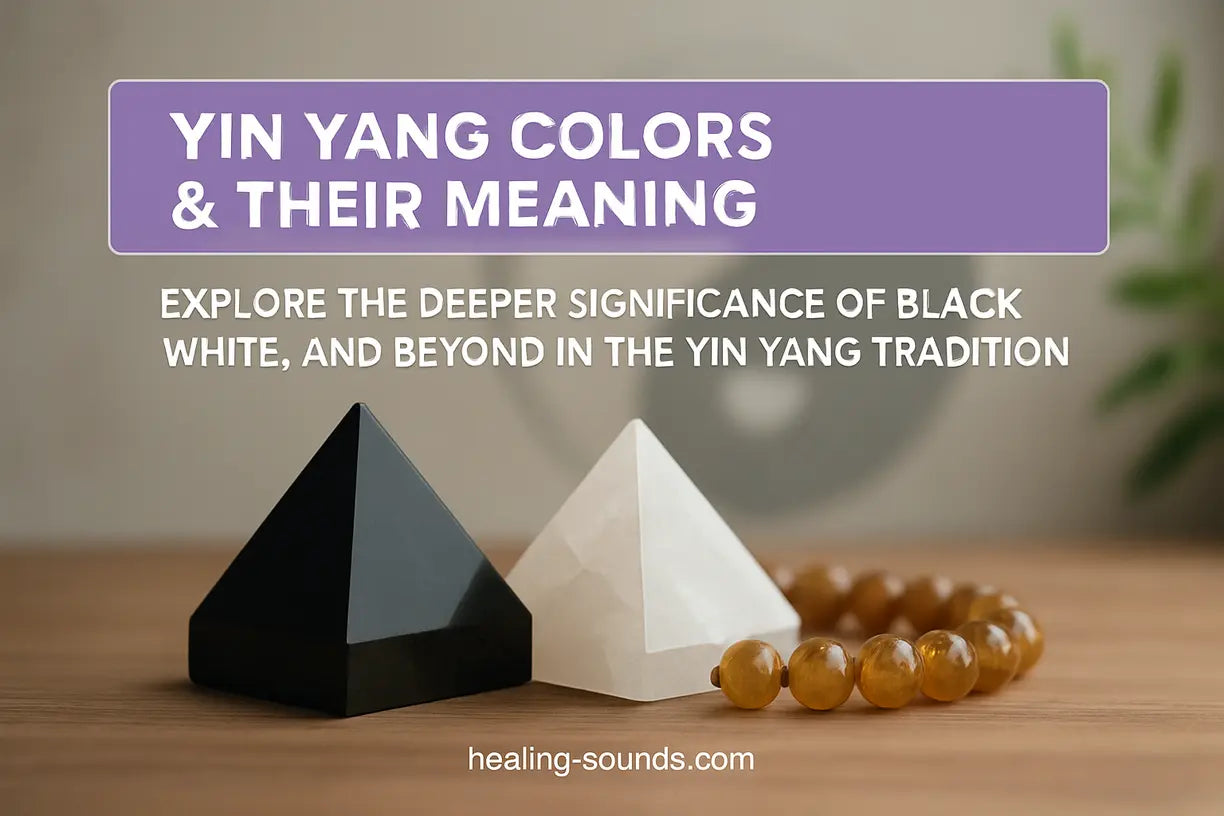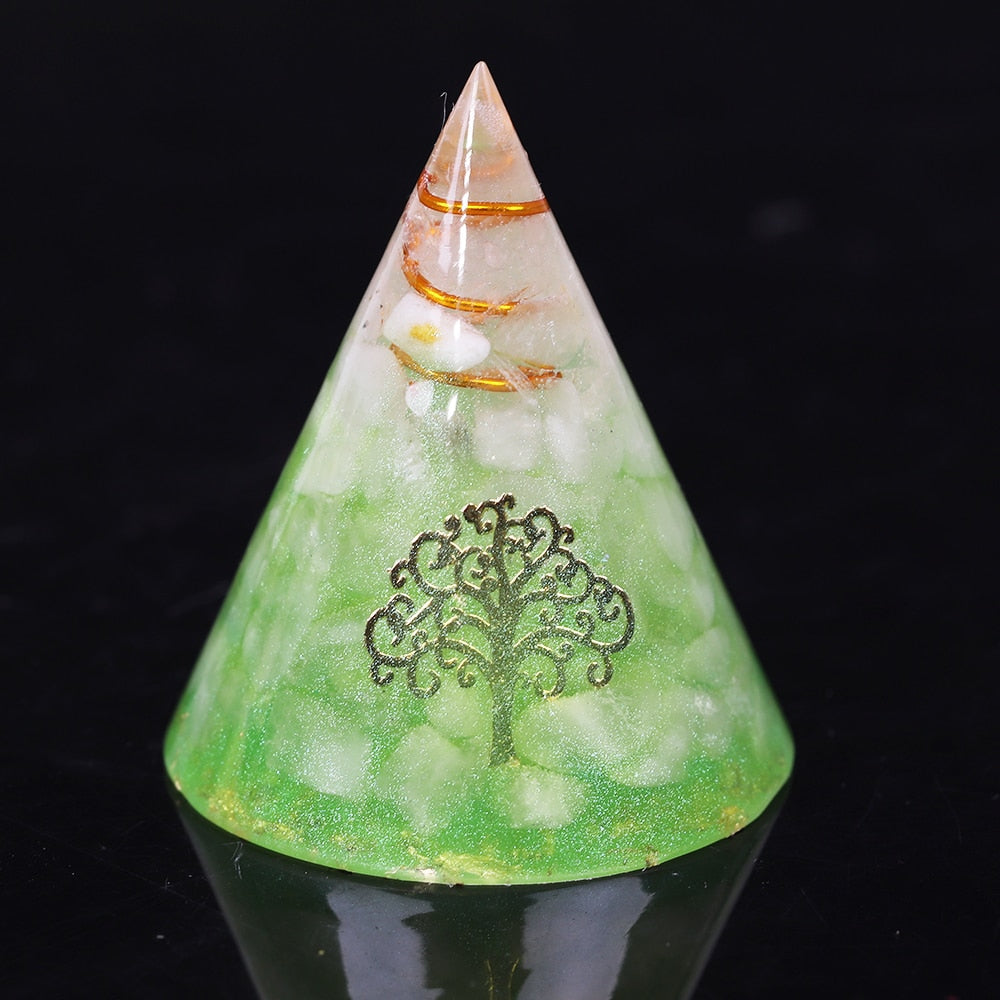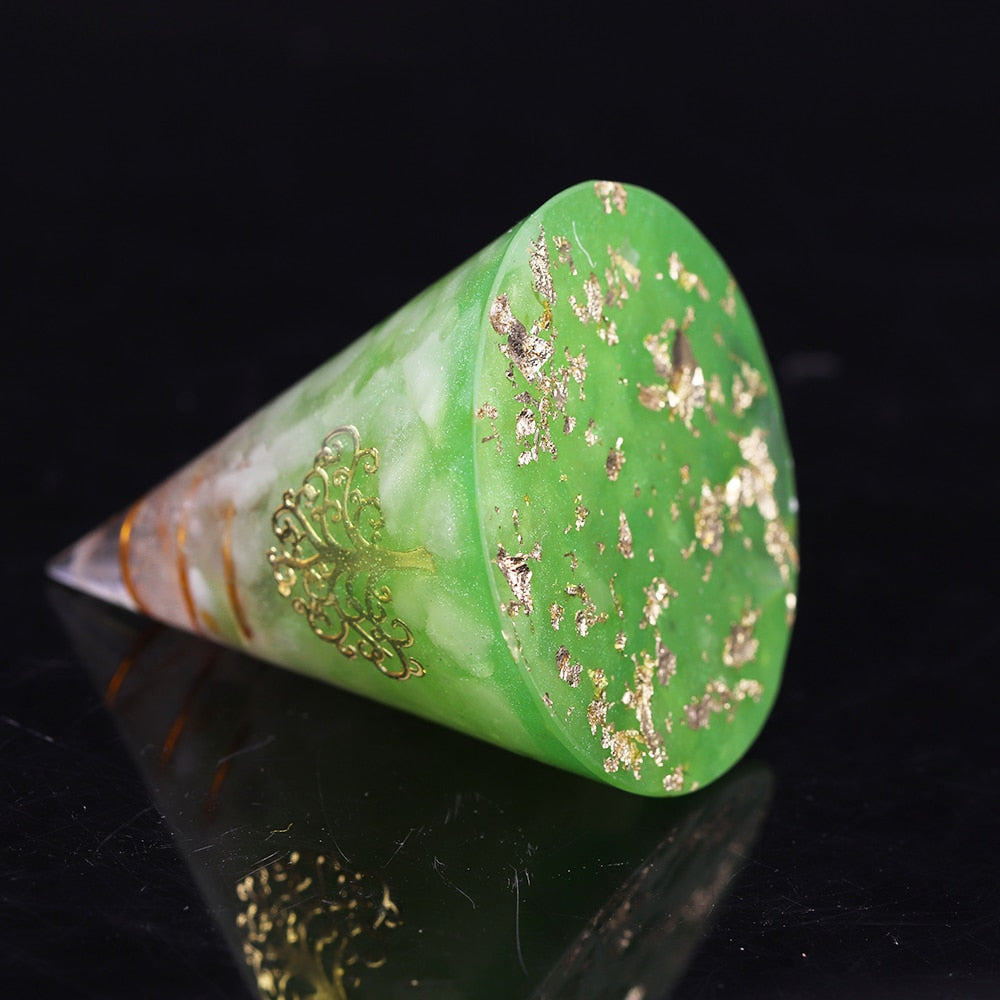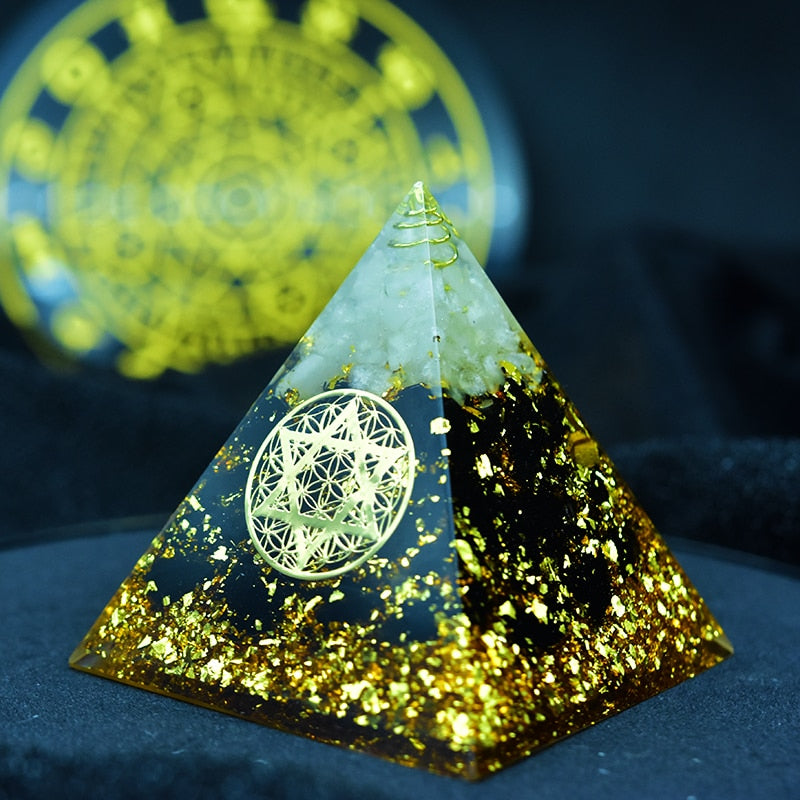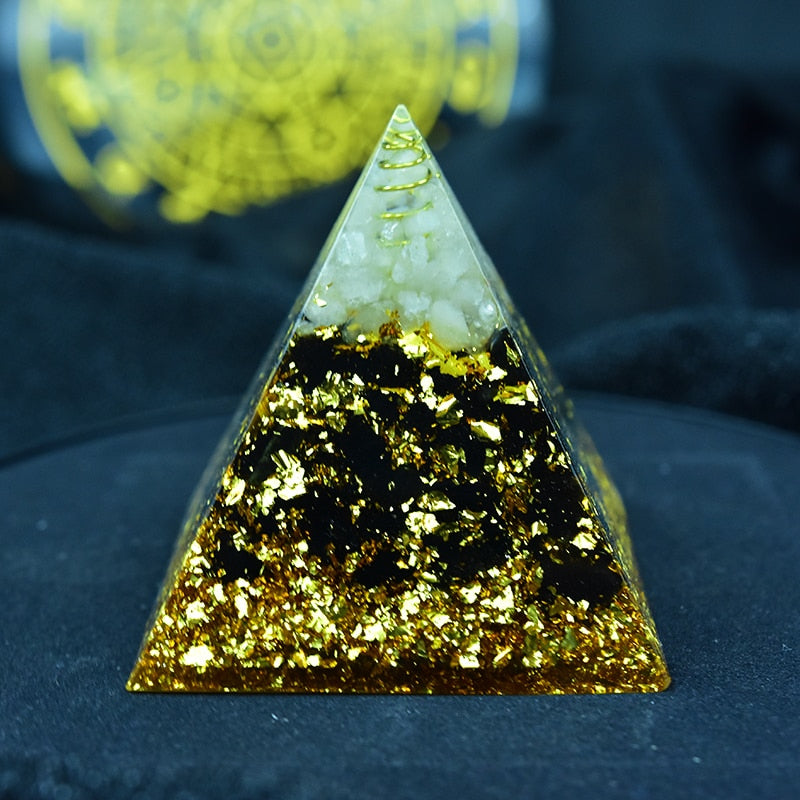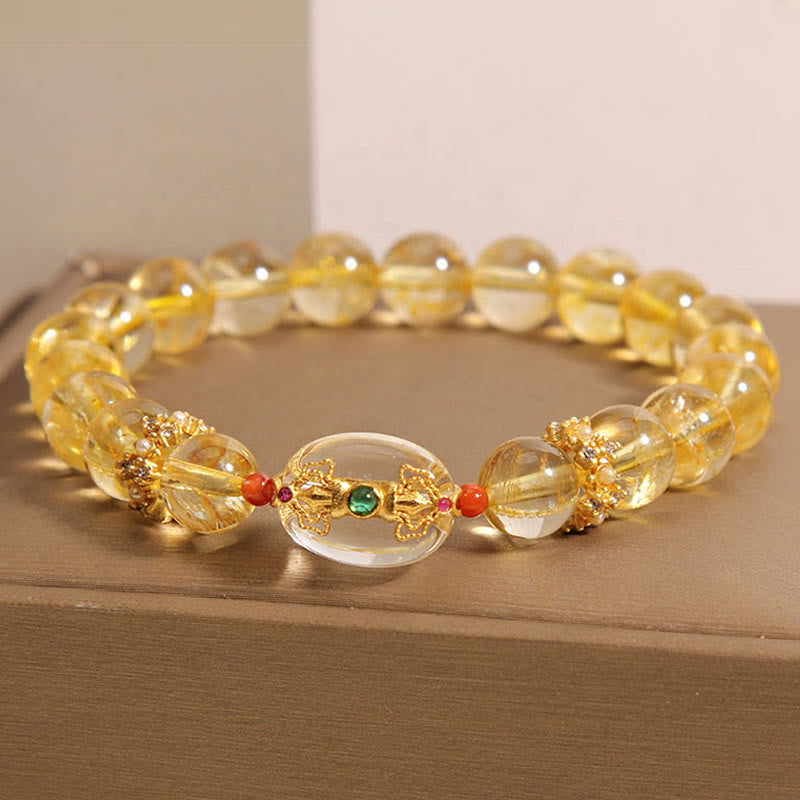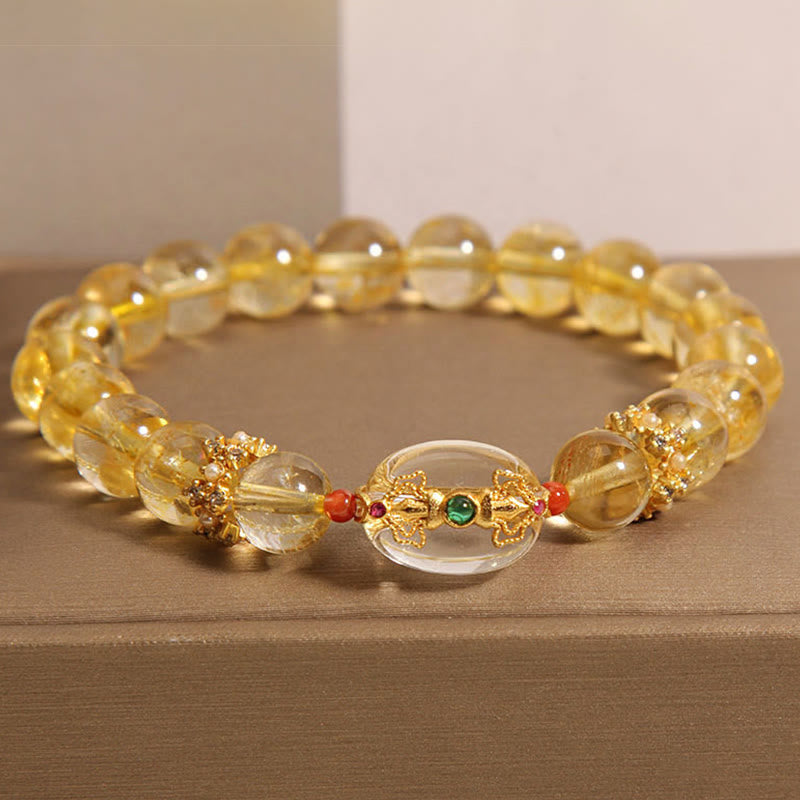Le symbole yin et yang est l'un des symboles les plus reconnus au monde. Ce simple cercle noir et blanc évoque l'équilibre, l'harmonie et l'interdépendance de toutes choses. Et si cette profonde philosophie s'étendait au-delà de deux nuances ? L'univers des couleurs yin et yang est bien plus riche et nuancé, offrant un langage vibrant pour comprendre l'énergie, la spiritualité et notre place dans l'univers. En explorant le spectre complet du yin et du yang, nous pouvons accéder à un outil puissant pour créer un équilibre, non seulement dans notre pratique spirituelle, mais aussi dans notre quotidien, de notre intérieur à notre style personnel.
Ce guide explore la signification profonde des couleurs yin et yang, dépassant le noir et blanc traditionnel pour révéler comment les différentes teintes expriment la dynamique entre deux forces fondamentales. Vous en découvrirez le symbolisme fondamental, découvrirez comment interpréter une palette de couleurs plus large à travers le prisme du yin et du yang, et découvrirez des moyens pratiques d'intégrer cette sagesse ancestrale pour une vie plus harmonieuse.
Le duo classique : comprendre le noir et le blanc dans le Yin et le Yang
Au cœur de la philosophie yin-yang se trouvent les deux couleurs emblématiques qui donnent sa forme au symbole. Ce ne sont pas de simples choix décoratifs ; ce sont des représentations fondamentales de la dualité cosmique. Comprendre leur signification est la première étape pour saisir l'intégralité du spectre énergétique.
Yin : l'essence du noir
La partie noire du symbole représente le Yin. Cette couleur incarne un ensemble de concepts puissants, souvent perçus à tort comme négatifs dans la culture occidentale, mais pourtant essentiels à l'équilibre. Le Yin est associé à :
- Énergie féminine : Elle représente les aspects nourriciers, intuitifs et réceptifs de l’existence.
- Passivité et immobilité : pensez au calme de la nuit, à la profondeur de l’océan ou à l’obscurité fertile du sol avant qu’une graine ne germe.
- Introspection : L’énergie Yin nous encourage à regarder vers l’intérieur, à réfléchir et à comprendre notre monde intérieur.
- Les éléments : Il est lié à l'eau et à la terre, incarnant la fraîcheur, la substance et la gravité.
Le noir, couleur du Yin, est la couleur du mystère, du potentiel et du vide profond d'où émerge toute création. Il s'agit d'être plutôt que de faire .
Yang : l'éclat du blanc
À l'inverse, la partie blanche du symbole représente le Yang. Cette couleur est le pendant énergétique du Yin, incarnant l'expression extérieure, la croissance et la lumière. Le Yang est associé à :
- Énergie masculine : Elle représente la force active, affirmée et créatrice de l'univers.
- Activité et mouvement : Pensez à la luminosité du soleil, à la puissance du feu ou à l’énergie d’une rivière tumultueuse.
- Expansion : l’énergie Yang encourage la croissance extérieure, l’expression et l’engagement avec le monde.
- Les éléments : Il est lié au feu et à l'air, incarnant la chaleur, la lumière et le mouvement.
Le blanc, couleur du Yang, est la couleur de la manifestation, de l'illumination et de l'action. Il s'agit d'agir plutôt que d'être .
Le point : un rappel de l'équilibre inhérent
Fondamentalement, dans le tourbillon noir se trouve un point blanc, et dans le tourbillon blanc, un point noir. C'est peut-être l'élément le plus important du symbole. Il illustre que rien n'est jamais purement yin ou purement yang. Il y a toujours une graine de l'autre dans chaque force. La nuit contient la promesse du jour, et le jour garde le souvenir de la nuit. Ce concept, expliqué dans des ouvrages comme l' Encyclopédie de philosophie de Stanford , est essentiel pour comprendre que l'équilibre n'est pas statique, mais un flux dynamique et continu.
Au-delà du noir et blanc : la palette étendue des couleurs Yin Yang
Si le noir et le blanc en sont les principaux représentants, les principes du yin et du yang s'appliquent à tout un spectre de couleurs. En comprenant les propriétés énergétiques d'une couleur – qu'elle soit froide et apaisante ou chaude et stimulante –, nous pouvons la classer comme étant à dominante yin ou yang. Cela permet une application plus personnelle et nuancée de la signification des couleurs yin-yang dans nos vies.

Couleurs dominantes Yin : froides, calmes et réceptives
Les couleurs yin sont généralement froides, douces et favorisent un sentiment de paix et d'introspection. Elles nous aident à ralentir, à nous détendre et à nous connecter à notre intuition.
- Bleu : Couleur du ciel et de l'océan, le bleu est profondément apaisant et associé à la tranquillité, à la sagesse et à la confiance. C'est une couleur Yin classique pour promouvoir la paix.
- Violet : Souvent associé à la royauté et à la spiritualité, le violet allie le calme du bleu à une touche de mystère. Il est idéal pour les espaces de méditation et favorise la réflexion profonde.
- Vert : Couleur de la nature, de la croissance et de la guérison. Bien qu'il possède des propriétés de croissance actives (Yang), son effet global est équilibrant et rafraîchissant, s'appuyant sur le côté nourrissant du Yin.
Couleurs dominantes Yang : chaudes, vibrantes et actives
Les couleurs yang sont chaudes, lumineuses et énergisantes. Elles stimulent l'action, la créativité et les interactions sociales. Ce sont elles qui nous procurent un sentiment d'éveil et d'engagement.
- Rouge : Couleur du feu et du sang, le rouge est la couleur yang la plus puissante. Il symbolise la passion, l'énergie, le courage et la vitalité. Utilisez-le lorsque vous avez besoin d'un regain de confiance ou de motivation.
- Orange : Mélange de rouge et de jaune, l'orange est joyeux, créatif et enthousiaste. C'est une couleur sociale qui encourage les liens et l'optimisme.
- Or et jaune : Représentant le soleil, ces couleurs sont associées à la clarté intellectuelle, à la richesse et à la gaieté. Elles apportent une énergie yang rayonnante et expansive à tout espace ou à toute intention.
Symbolisme des couleurs Yin Yang dans la vie quotidienne
Comprendre l' énergie des couleurs yin et yang n'est pas seulement un exercice philosophique ; c'est un outil pratique pour créer une vie équilibrée et réfléchie. En choisissant consciemment vos couleurs, vous pouvez influencer l'énergie de votre environnement et votre état d'esprit.

Créer une maison harmonieuse avec les couleurs Feng Shui
En Feng Shui, l'aménagement de l'espace pour optimiser la circulation de l'énergie (Chi), la couleur est primordiale. Vous pouvez utiliser les principes du yin et du yang pour créer une maison à la fois reposante et vivifiante. Par exemple, utilisez des couleurs yin apaisantes comme le bleu ou le vert tendre dans les chambres et les salles de bain pour favoriser la détente. Dans les espaces communs comme le salon ou la cuisine, privilégiez des couleurs yang vibrantes comme le jaune ou l'orange pour encourager la conversation et l'activité.
Pyramide conique en quartz blanc pour la méditation et l'harmonie
$49.99 $59.99
Purifiez votre espace et évoquez la clarté du Yin avec cette élégante pyramide de quartz blanc, idéale pour la méditation et l'équilibre énergétique.
Explorer le produitExpression personnelle à travers les bijoux et les vêtements
Les couleurs que vous portez peuvent être une forme de travail énergétique personnel. Vous vous sentez épuisé et passif ? Portez une touche de rouge ou un bijou doré pour invoquer le principe actif du Yang. Vous vous sentez dispersé et surexcité ? Choisissez une chemise bleue ou un accessoire noir pour vous ancrer dans la présence apaisante du Yin. Ce simple geste est un moyen d'équilibrer consciemment vos énergies tout au long de la journée.
Améliorer la méditation et la pratique spirituelle
Lorsque vous méditez ou formulez des intentions, vous pouvez utiliser des cristaux et des objets dont les couleurs s'harmonisent avec votre objectif. En quête de clarté et de perspicacité ? Méditez avec un cristal blanc ou transparent. Besoin de vous ancrer et de libérer les énergies négatives ? Une pierre noire comme l'obsidienne peut être un allié puissant. En utilisant des objets aux énergies de couleurs spécifiques, vous offrez à votre esprit un point focal tangible pour votre travail spirituel.

Améliorez votre équilibre énergétique
$49.99
$59.99
Canalisez la puissance de l'énergie Yin noire pour la protection et la transformation avec cette pyramide d'orgone en obsidienne fabriquée à la main. En savoir plus ➔
$29.90
$42.90
Intégrez l'énergie dorée inspirée du yang dans votre vie quotidienne avec ce bracelet en quartz rutile radieux pour l'équilibre et la vitalité. En savoir plus ➔
Conclusion : Un monde d'équilibre dans toutes les nuances
La philosophie des couleurs yin et yang nous enseigne que le monde énergétique n'est pas binaire, mais un spectre magnifique et fluide. Le noir et le blanc en constituent les fondements, représentant les principes fondamentaux de calme et d'action, de réceptivité et de création. Cependant, étendre cette sagesse à des couleurs comme le bleu, le rouge, le vert et l'or nous permet d'interagir avec ces énergies de manière profondément personnelle et concrète. En comprenant leur symbolisme, nous pouvons devenir des créateurs conscients d'harmonie dans nos vies, en utilisant la couleur pour équilibrer notre intérieur, notre énergie et notre esprit. C'est un rappel intemporel que l'équilibre n'est pas une destination à atteindre, mais une danse colorée et continue dont nous faisons tous partie.
Questions fréquemment posées sur les couleurs Yin Yang
Les couleurs traditionnelles et fondamentales du yin-yang sont le noir pour le Yin et le blanc pour le Yang . Le noir représente la féminité, l'obscurité, la passivité et l'introspection, tandis que le blanc représente la masculinité, la lumière, l'activité et l'expression extérieure. Le symbole comporte également un point de la couleur opposée dans chaque section, signifiant que rien n'est purement l'un ou l'autre.
Le Yin est le principe féminin . Il incarne des qualités traditionnellement associées au féminin, telles que la réceptivité, l'intuition, la bienveillance, la douceur et le pouvoir paisible de la lune et de la terre. Le Yang, son pendant, représente le principe masculin, associé à l'action, à l'affirmation de soi, à la créativité et au pouvoir du soleil.
Le Yin et le Yang symbolisent le concept de dualisme et d'équilibre dans l'univers . Ils illustrent comment des forces apparemment opposées ou contraires sont en réalité complémentaires, interconnectées et interdépendantes. Les couples symboliques clés incluent la lumière/l'obscurité, le feu/l'eau, le masculin/féminin et l'expansion/la contraction. Ce symbole illustre la coexistence de ces forces et leur interaction dans un cycle dynamique et continu.
Dans le contexte de l'amour et des relations, le Yin et le Yang représentent des énergies différentes, mais essentielles. Le Yin (noir) symbolise les aspects réceptifs de l'amour : l'écoute, l'attention, la connexion émotionnelle et la création d'un espace de sécurité. Le Yang (blanc) représente les aspects actifs : la recherche, la protection, l'épanouissement et l'expression de l'amour. Une relation équilibrée nécessite un flux sain d'énergies Yin et Yang de la part des deux partenaires.
Les couleurs du symbole yin-yang sont profondément symboliques. Le noir (Yin) représente des concepts comme la nuit, le calme, l'énergie féminine, le froid et la passivité. Le blanc (Yang) représente le jour, l'activité, l'énergie masculine, la chaleur et l'affirmation de soi. Ensemble, ils illustrent l'interdépendance de ces forces opposées, montrant comment elles créent un tout équilibré et complet.

